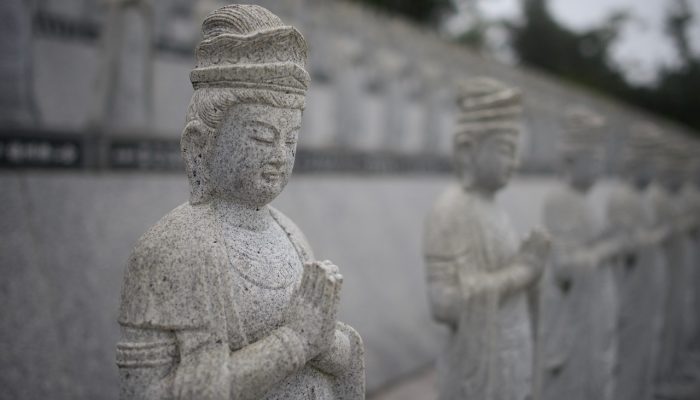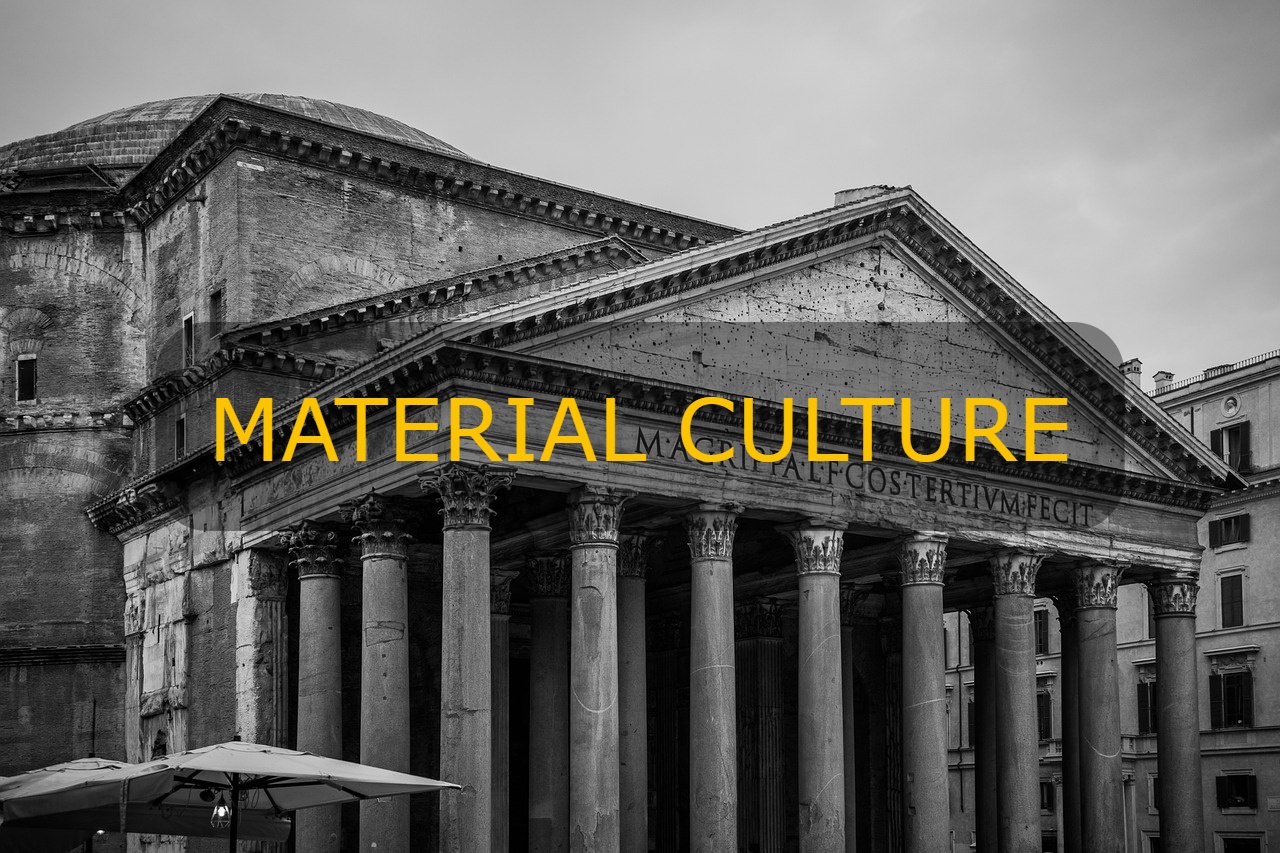What is Material Culture in Sociology?
Material culture serves as a fundamental lens through which sociologists analyze and understand societies. Rooted in the recognition that tangible objects hold immense symbolic, practical, and cultural significance, the study of material culture illuminates the intricate web of meanings, behaviors, and social structures that shape human life. From the tools we use to the buildings we inhabit, material artifacts not only reflect societal values and norms but also actively contribute to the construction and maintenance of social identities, relationships, and power dynamics.
At its core, material culture encompasses the physical manifestations of human existence—the artifacts, architecture, technologies, and everyday objects that populate our world. Yet, its significance transcends mere physicality, extending into the realms of symbolism, consumption, and social interaction. Through the analysis of material culture, sociologists delve into the multifaceted ways in which objects mediate social life, influence individual behavior, and reinforce collective meanings.
This introductory exploration into material culture in sociology seeks to unpack the complexities of this interdisciplinary field, tracing its historical roots, delineating its theoretical underpinnings, and highlighting its contemporary relevance. By interrogating the material world that surrounds us, sociologists gain critical insights into the dynamics of culture, power, and social change, enriching our understanding of the human experience and the societies we inhabit.Top of F

DEFINITION:
In sociology, material culture is defined as the physical objects, resources, and spaces that people use to define their culture. These include items such as buildings, tools, clothing, and artwork, as well as the built environment and infrastructure. Material culture is an important aspect of sociology because it reflects the values, beliefs, and practices of a society. It can also shape social interactions and identities.
Historical Perspectives on Material Culture Studies:
Material culture studies have a rich and diverse history, evolving over centuries as scholars from various disciplines have explored the significance of tangible artifacts in understanding human societies. While the formal study of material culture as a distinct field emerged relatively recently, its roots can be traced back to antiquity, where philosophers, archaeologists, and historians grappled with questions surrounding the role of objects in shaping culture and identity.
Antiquity and Classical Period:
In ancient civilizations such as Egypt, Mesopotamia, and Greece, material artifacts played a central role in religious rituals, governance, and daily life. Philosophers like Plato and Aristotle pondered the nature of material objects and their relationship to human experience, laying the groundwork for future inquiries into material culture.
Renaissance and Early Modern Era:
The Renaissance witnessed a renewed interest in classical antiquity, prompting scholars and collectors to study and preserve material artifacts from the past. Cabinets of curiosities emerged as precursors to modern museums, showcasing diverse objects ranging from natural specimens to artistic creations.
18th and 19th Centuries:
The Enlightenment era saw the emergence of empirical inquiry and scientific exploration, fueling advancements in archaeology, anthropology, and ethnography. Scholars like Johann Joachim Winckelmann and Augusta Comte began to systematically study material culture, recognizing its importance in understanding human history and social development.
Early 20th Century:
The rise of cultural anthropology and sociology in the early 20th century brought renewed attention to material culture as a key component of social analysis. Figures like Franz Boas and Marcel Mauss pioneered ethnographic methods, conducting fieldwork among diverse societies to document and interpret their material practices.
Mid to Late 20th Century:
Material culture studies experienced resurgence in the mid-20th century, driven by scholars such as Marshall McLuhan, Pierre Bourdieu, and Clifford Geertz. Their work emphasized the symbolic dimensions of material artifacts, exploring how objects convey cultural meanings, power dynamics, and social identities.
Contemporary Perspectives:
In the 21st century, material culture studies continue to evolve, influenced by interdisciplinary approaches and digital technologies. Scholars explore topics such as consumer culture, globalization, and the materiality of digital media, expanding the boundaries of traditional material culture analysis
Types of material culture in sociology:
Artifacts: Objects created or modified by humans, such as tools, clothing, pottery, and weapons.
Architecture: Buildings, structures, and urban layouts that reflect cultural values, technological advancements, and societal organization.
Household Items: Items used in daily life within domestic settings, including furniture, utensils, decorations, and appliances.
Technology: Tools, machinery, and devices developed by societies to facilitate various tasks and activities.
Clothing and Fashion: Garments, accessories, and styles of dress that reflect cultural norms, social status, and individual identity.
Food and Cuisine: Culinary practices, recipes, and food-related objects that embody cultural traditions, dietary habits, and social rituals.
Transportation: Vehicles and modes of transportation used for travel and mobility, such as cars, trains, bicycles, and boats.
Communication Media: Objects and technologies used for communication purposes, including writing systems, books, newspapers, radios, televisions, and smart phones.
Art and Performance: Visual arts, music, dance, theater, and other forms of creative expression that reflect cultural values, beliefs, and aesthetics.
Ritual Objects: Items used in religious or ceremonial contexts, such as symbols, relics, altars, and sacred texts.
Souvenirs and Memorabilia: Objects acquired as mementos or keepsakes, often associated with specific events, places, or experiences.
Environmental Features: Landscapes, gardens, parks, and natural elements that are shaped or utilized by human societies for cultural, recreational, or symbolic purposes.
Material Culture in Contemporary Society:
In the fast-paced, interconnected world of the 21st century, material culture continues to play a central role in shaping everyday life, social interactions, and cultural dynamics. From the proliferation of consumer goods to the globalization of cultural exchange, contemporary society is characterized by a complex and diverse array of material artifacts that reflect and influence our values, behaviors, and identities.
Consumer Culture: In contemporary society, consumer culture is ubiquitous, driven by mass production, advertising, and global capitalism. Material objects are not merely utilitarian necessities but also symbols of status, identity, and lifestyle. From smart phones and designer clothing to luxury cars and fast food, consumer goods serve as markers of social distinction and aspiration, shaping patterns of consumption and social stratification.
Digital Materiality: The rise of digital technology has transformed the landscape of material culture, blurring the boundaries between the physical and virtual realms. Digital devices, such as smart phones, tablets, and laptops, have become indispensable tools in everyday life, mediating our interactions with information, communication, and entertainment. The materiality of digital media, including algorithms, interfaces, and hardware, influences how we perceive, navigate, and interact with the digital world.

Globalization and Hybridist: Contemporary material culture is increasingly characterized by hybridist and cultural fusion, as globalization facilitates the exchange of ideas, styles, and goods across geographical and cultural boundaries. Cultural artifacts from diverse traditions and contexts intermingle, giving rise to new forms of hybridist, appropriation, and creative expression. This globalization of material culture fosters both cultural diversity and homogenization, as local practices are influenced by global trends and vice versa.
Sustainability and Ethical Consumption: In response to environmental concerns and ethical considerations, there is growing awareness of the impact of material culture on the planet and society. Sustainable practices, such as recycling, up cycling, and ethical consumption, are gaining traction as individuals and communities seek to minimize their ecological footprint and promote social justice. From eco-friendly products to fair trade initiatives, there is a burgeoning movement towards more responsible and mindful consumption practices.
Materiality of Memory and Identity: Material objects serve as repositories of memory, history, and identity in contemporary society, embodying personal and collective narratives. Family heirlooms, photographs, souvenirs, and memorabilia hold sentimental value and cultural significance, connecting individuals to their past and to each other. In an increasingly digital age, the materiality of objects takes on added importance as tangible reminders of lived experiences and cultural heritage.
In sum, material culture in contemporary society is a dynamic and multifaceted phenomenon, reflecting the complexities of globalization, technology, consumption, and identity. By examining the material artifacts that populate our world, we gain valuable insights into the cultural, social, and economic forces that shape our lives and communities.
Conclusion:
In exploring material culture, we uncover a rich tapestry of human experience, one woven with the threads of tangible artifacts that shape and reflect the societies in which we live. From ancient civilizations to contemporary globalized networks, material culture serves as a lens through which we interpret the complexities of human existence, identity, and social interaction.
Through the study of material culture, we gain insights into the ways in which objects mediate our relationships with one another and with the world around us. Material artifacts are not mere commodities; they are repositories of meaning, memory, and social significance. They serve as tangible manifestations of cultural values, beliefs, and practices, encoding within them the stories of individuals and communities across time and space.
Moreover, material culture is not static but dynamic, evolving in response to changing social, economic, and technological forces. The globalization of consumer culture, the digital revolution, and the growing awareness of environmental sustainability are reshaping the landscape of materiality, challenging us to rethink our relationships with objects and the world.
As we navigate the complexities of contemporary society, let us not overlook the significance of material culture in illuminating our shared humanity and the diverse ways in which we construct meaning, identity, and community. By embracing the study of material culture, we embark on a journey of discovery and understanding, enriching our appreciation for the tangible artifacts that surround us and the stories they have to tell.

